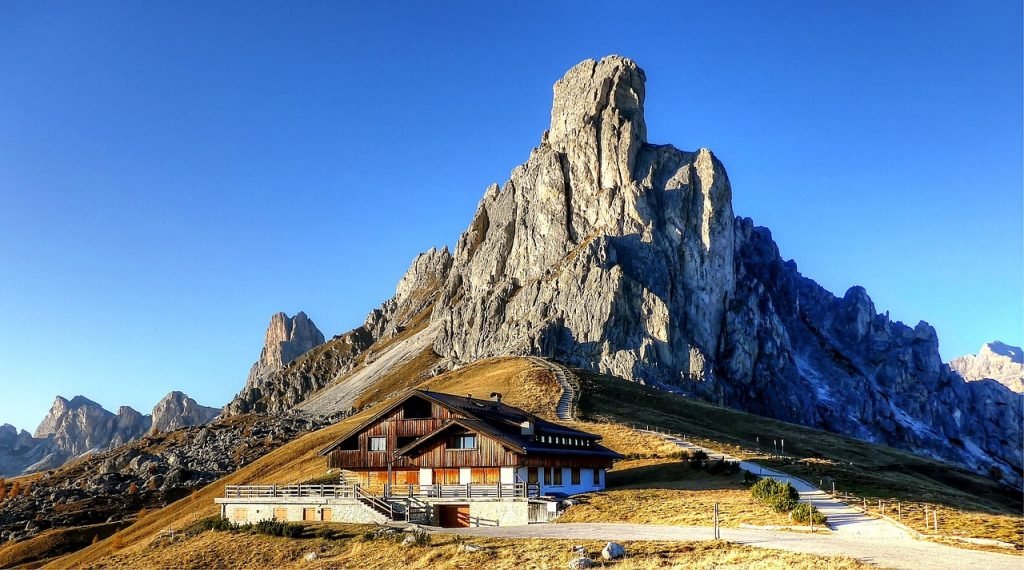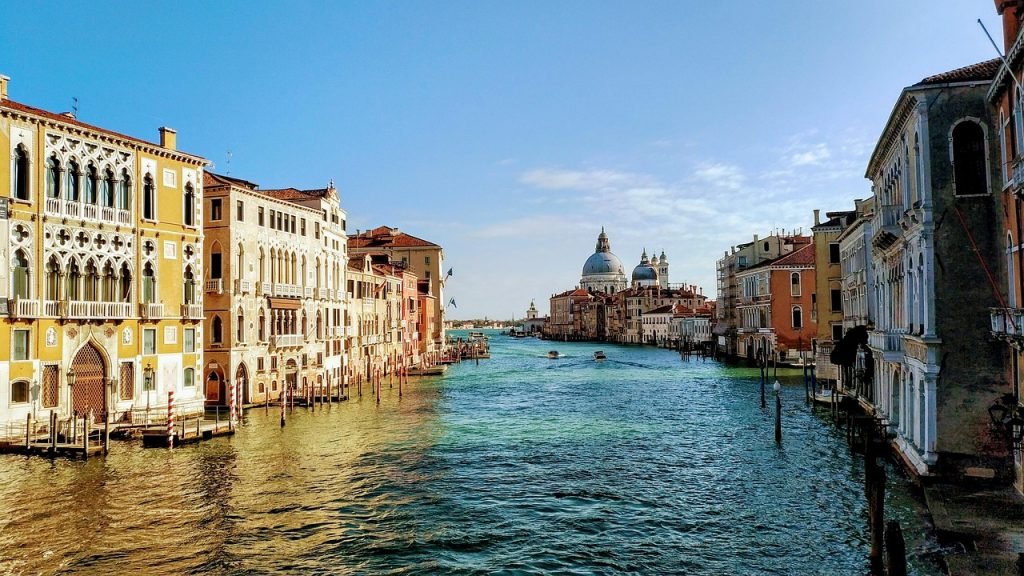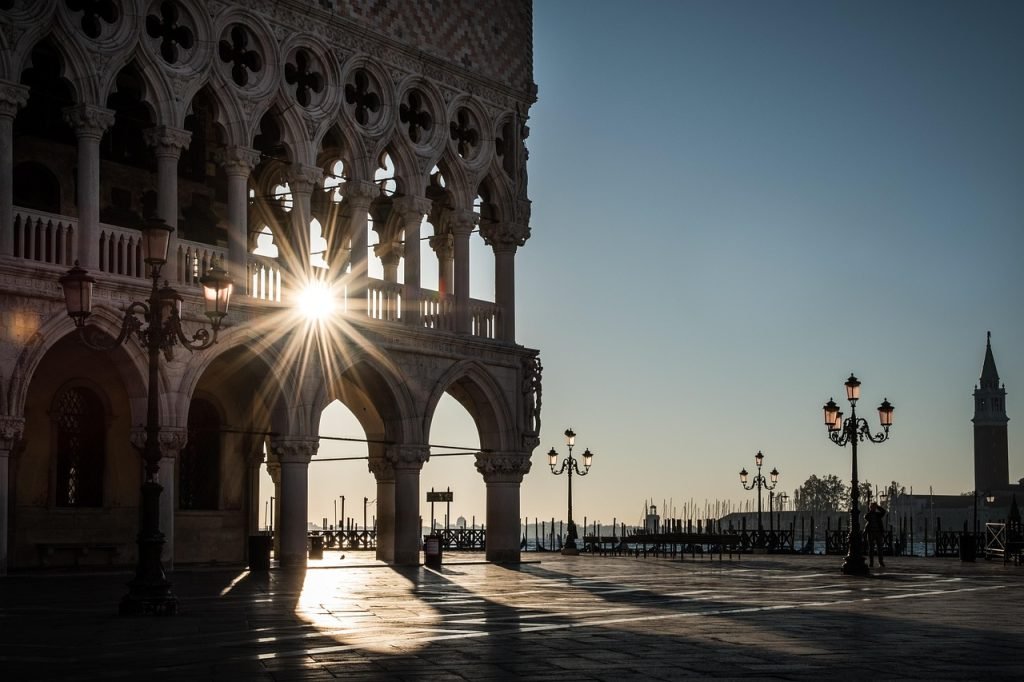If there’s one location in the Dolomites that perfectly embodies the phrase “Instagram gold,” it’s the legendary Passo Giau (Giau Pass). This spectacular Alpine crossing at 2,236 meters above sea level serves as both a photographer’s paradise and the gateway to one of the most rewarding day hikes in the entire UNESCO World Heritage region.
The hike to Rifugio Averau and the summit of Monte Nuvolau from Giau Pass represents everything that makes Dolomites hiking extraordinary: breathtaking panoramic views, accessible yet satisfying terrain, authentic mountain refugio culture, and photo opportunities that will make your social media followers question whether you’ve discovered a secret planet.
But like many of the Dolomites’ most spectacular destinations, this incredible experience comes with its own set of logistical challenges and insider secrets that can make the difference between a magical mountain day and a frustrating tourist trap experience.
The Photogenic Gateway: Passo Giau
Instagram’s Favorite Mountain Pass
Passo Giau has achieved legendary status among landscape photographers and Instagram enthusiasts, and for entirely legitimate reasons. This serpentine mountain pass, with its dramatic switchbacks carved into the mountainside, creates some of the most iconic road photography in the Alps.
The pass itself offers panoramic views that read like a greatest hits collection of Dolomites peaks: the distinctive profile of Gusela dominates the view with Monte Nuvolau perched dramatically on its summit, while the distant silhouettes of Cortina’s famous peaks – including Tofana di Rozes and Cristallo – create a magnificent backdrop that changes character with every shift in lighting.
During autumn, the combination of golden larch forests, dramatic limestone peaks, and the snaking ribbon of the pass road creates compositions that look almost too perfect to be real. Sunrise and sunset transform this landscape into something approaching the supernatural, with alpenglow painting the peaks in shades of rose, gold, and deep purple.
The Harsh Reality: Parking Nightmares
Now for the honest truth that many Instagram posts conveniently omit: parking at Giau Pass can be an absolute nightmare, especially during peak season and perfect weather days.
The limited parking areas along the pass fill up incredibly early – often before 7:00 AM during July and August. Weekend warriors arriving after 8:00 AM frequently find themselves driving in circles, desperately searching for any legal parking spot within reasonable walking distance of the trailheads.
The situation becomes particularly challenging because the narrow mountain road offers very few safe pullout areas, and Italian traffic authorities are increasingly strict about illegal parking on mountain passes. Cars parked in unauthorized locations face hefty fines and, in extreme cases, towing – a logistical nightmare when you’re planning a full day hike.
Strategic Parking Solutions:
- Arrive before sunrise to secure prime parking spots
- Consider weekday visits when possible
- Have backup parking plans at lower elevations (though this adds hiking distance)
Critical Driving Warning: Speed Camera Alert
Here’s an essential piece of information that could save you hundreds of euros and significant post-vacation stress: there’s a speed camera on the approach to Giau Pass that catches countless unsuspecting tourists.
The camera is positioned on one of the more scenic stretches of road, precisely where drivers naturally slow down to admire the views or search for parking. However, the speed limit in this section is strictly enforced, and the fines for violations are substantial – typically €150-300 for moderate speeding.
International visitors are particularly vulnerable because they often underestimate Italian speed enforcement technology and assume that mountain road cameras are less sophisticated than urban systems. This assumption proves expensive when the fine arrives by mail weeks later.
Driving Strategy: Maintain strict attention to posted speed limits throughout the entire approach to Giau Pass, resist the temptation to slow down dramatically for photo opportunities without proper pullouts, and remember that scenic mountain roads are still subject to rigorous traffic enforcement.
The Hike: Giau Pass to Rifugio Averau
Trail Overview and Difficulty
The hike from Giau Pass to Rifugio Averau represents the perfect introduction to serious Dolomites hiking without requiring extreme technical skills or mountaineering experience. This well-marked trail covers approximately 4.5 kilometers with an elevation gain of roughly 400 meters, making it accessible to reasonably fit hikers while still providing a legitimate mountain challenge.
The trail begins directly from the Giau Pass parking area, immediately immersing you in the kind of Alpine landscape that defines the Dolomites experience. The initial section follows a wide, well-maintained path that gradually ascends through meadows dotted with traditional mountain huts and grazing areas.
Technical Difficulty: Moderate. The trail involves steady uphill sections with some rocky terrain, but nothing that requires special equipment beyond proper hiking boots and trekking poles (recommended but not essential).
Time Requirements: Allow 2 hours for the ascent to Rifugio Averau, depending on your fitness level and photography stops (and trust me, you’ll want to stop frequently for photos).
The Gusela and Nuvolau Spectacle
One of the most spectacular aspects of this hike is the constantly changing perspective of Gusela mountain with Monte Nuvolau crowning its summit. This distinctive mountain formation, rising dramatically from the Alpine landscape, provides a compelling focal point that draws hikers toward their ultimate destination.
Gusela’s imposing presence dominates the view from Giau Pass, with the Nuvolau summit clearly visible as your hiking objective. This visual connection between starting point and destination creates an immediate sense of adventure and anticipation that makes the hike feel like a genuine mountain quest rather than a casual walk.
The Cinque Torri (Five Towers), while not visible from Giau Pass itself, become a spectacular feature during the hike, particularly as you gain elevation toward Rifugio Averau. These distinctive limestone spires, rising like ancient castle towers, provide dramatic photographic opportunities and hold special significance in Dolomites climbing history, having served as a training ground for generations of mountaineers.
Rifugio Averau: Mountain Hospitality at Its Finest
Rifugio Averau, perched at 2,413 meters above sea level, represents everything wonderful about traditional Alpine refugio culture. This family-run mountain hut has been welcoming hikers since 1898, combining over a century of hospitality experience with genuine passion for sharing the Dolomites’ natural wonders.
The refugio’s position offers spectacular panoramic views that encompass some of the most famous peaks in the Dolomites, including distant glimpses of the Marmolada glacier, the Sella Group, and the distinctive profile of Pelmo. The outdoor terrace provides the perfect setting for the quintessential Dolomites experience: enjoying a well-earned meal while surrounded by some of the most dramatic mountain scenery on Earth.
Culinary Experience: The refugio specializes in hearty Alpine cuisine that perfectly complements serious mountain hiking. Traditional dishes like speck and dumpling soup, venison goulash, and apple strudel provide the kind of satisfying mountain food that transforms a simple meal into a memorable cultural experience.
Accommodation: For those planning multi-day adventures, Rifugio Averau offers traditional mountain accommodation with dormitory-style rooms and spectacular sunrise views that make early morning departures genuinely enjoyable rather than merely tolerable.
The Summit Push: Monte Nuvolau
Extending the Adventure
From Rifugio Averau, ambitious hikers can extend their adventure with a summit push to Monte Nuvolau (2,574 meters), adding approximately 1.5 hours round-trip to the overall hiking time but providing rewards that justify every additional step.
The ascent to Nuvolau involves more challenging terrain with steeper sections and some basic scrambling over rocky terrain. While still within the capabilities of experienced hikers, this extension requires additional care, proper footwear, and comfort with more exposed mountain terrain.
Summit Rewards
The summit of Monte Nuvolau offers what many consider the finest panoramic viewpoint in the Cortina d’Ampezzo region. From this elevated perspective, you’ll gain a 360-degree vista that encompasses virtually every major peak group in the Dolomites.
The views extend from the dramatic walls of the Tofana Group to the distant spires of the Tre Cime di Lavaredo, from the glacier-covered summit of Marmolada to the distinctive pyramid of Monte Pelmo. On exceptionally clear days, the views extend well beyond the Dolomites to include peaks in Austria and Switzerland.
This summit experience provides the kind of perspective that fundamentally changes your understanding of the Dolomites’ geography and geological relationships. Instead of viewing individual mountain groups as separate entities, you begin to comprehend the region as an interconnected landscape of extraordinary complexity and beauty.
Passaporto dei Rifugi: Collecting Mountain Memories
The Alpine Passport Program
One of the most charming and addictive aspects of Dolomites hiking culture is the Passaporto dei Rifugi (Refugio Passport) program. This official initiative encourages hikers to visit multiple mountain huts throughout the region, collecting unique stamps that serve as both souvenirs and proof of their Alpine adventures.
How the System Works: Each participating refugio maintains its own distinctive stamp, often featuring artistic designs that reflect the hut’s location, local landmarks, or cultural heritage. These stamps are typically available at the refugio’s reception desk or dining area, and collecting them becomes an surprisingly engaging game that adds extra motivation to explore new mountain destinations.
Collecting Your Stamps at Rifugio Averau: When you arrive at Rifugio Averau, simply ask the staff for the refugio stamp (timbro del rifugio in Italian). The friendly team takes genuine pride in their distinctive stamp and often enjoys chatting with visitors about their passport collections and hiking experiences throughout the Dolomites.
Building Your Collection Strategy
The Passaporto dei Rifugi program transforms casual hiking into a regional treasure hunt that can span multiple visits and seasons. Many hikers discover that collecting stamps becomes an addictive pursuit that motivates them to explore refugios they might otherwise overlook.
Passport Availability: You can purchase the official Passaporto dei Rifugi at most participating refugios, tourist information centers throughout the Dolomites, or online through the official program website. The passport includes maps, refugio information, and designated spaces for collecting stamps from dozens of mountain huts.
Seasonal Considerations and Optimal Timing
Peak Season Realities
The Giau Pass area experiences intense popularity during the peak summer months (July-August) and the autumn larch season (late September-early October). During these periods, expect significant crowds, challenging parking situations, and refugios that may be fully booked for meals and accommodation.
However, the popularity is entirely justified. The hiking conditions during peak season are generally excellent, with well-maintained trails, reliable refugio services, and the kind of perfect Alpine weather that makes every photograph look like a professional landscape shot. Be aware that every refugio usually opens only from mid June to September. December, especially around the Christmas holidays, features special openings.
Shoulder Season Advantages
Late spring (May-early June) and early autumn (late October-November) offer compelling alternatives for hikers willing to accept slightly less predictable weather in exchange for dramatically reduced crowds and more intimate mountain experiences.
During shoulder seasons, parking at Giau Pass becomes manageable, refugio staff have more time for personal interactions, and the overall mountain experience feels more authentic and less commercialized.
Weather Considerations: Shoulder season hiking requires more careful weather monitoring and appropriate gear for changing conditions, but the rewards include spectacular lighting conditions, fewer crowds, and the possibility of experiencing these famous locations in relative solitude.
Strategic Planning Recommendations
For Photography Enthusiasts
If your primary goal involves capturing spectacular mountain photography, plan your visit around optimal lighting conditions rather than convenience factors. The golden hour light at Giau Pass creates some of the most dramatic landscape photography opportunities in the Alps.
Sunrise Strategy: Arrive at Giau Pass before dawn to secure parking and position yourself for sunrise photography. The early morning light on the Cinque Torri and surrounding peaks creates magical conditions that justify the early wake-up call.
Sunset Considerations: Evening light can be equally spectacular, but requires careful timing to ensure you can safely descend from higher elevations before darkness.
For Serious Hikers
The combination of Rifugio Averau and Monte Nuvolau summit provides an excellent introduction to Dolomites high-altitude hiking without requiring extreme technical skills or mountaineering equipment.
This route serves as perfect preparation for more challenging Dolomites adventures, offering genuine mountain terrain and navigation challenges while maintaining reasonable safety margins and reliable escape routes.
For Cultural Enthusiasts
The Passaporto dei Rifugi program adds a wonderful cultural dimension to the hiking experience, connecting you with the traditional Alpine hospitality culture that has welcomed mountain travelers for over a century. Near the Cinque Torri there is also a small but very interesting museum about the First World War, which is free to visit.
The Complete Experience
The hike from Giau Pass to Rifugio Averau and Monte Nuvolau represents everything that makes Dolomites hiking extraordinary: spectacular scenery, accessible challenge levels, authentic mountain culture, and the kind of panoramic views that redefine your understanding of Alpine beauty.
Yes, you’ll face parking challenges, crowds during peak season, and the need for careful driving attention (remember that speed camera!). But these logistical considerations pale in comparison to the rewards: standing on Monte Nuvolau’s summit with the entire Dolomites spread below you, enjoying traditional Alpine cuisine at a century-old mountain refugio, and collecting that distinctive stamp in your Passaporto dei Rifugi.
This isn’t just a hike – it’s an introduction to a mountain culture and landscape that has been inspiring visitors for generations. Whether you’re seeking Instagram-worthy photography, serious Alpine hiking, or cultural immersion in traditional mountain hospitality, the Giau Pass area delivers experiences that will keep you planning return visits to the Dolomites for years to come.
Pro Tip: Consider combining this hike with visits to other nearby attractions like the Cinque Torri via ferrata or the scenic drive to Falzarego Pass, creating a full-day Dolomites experience that maximizes your time in this spectacular region while building an impressive collection of refugio stamps along the way.


